Yoga is a spiritual, mental, and physical practice that’s been around for centuries. Today, there are several types of yoga that vary in difficulty and speed. While different yoga types feel different, yogis and scientists alike will tell you they are all extremely beneficial for your mental and physical health.

The great thing about yoga is there are very few limitations to start. While colorful yoga pants, support blocks, and fancy mats are nice, you don’t necessarily need any of that stuff to get started. Instead, simply pick a basic yoga routine that has beginner poses and follow along. You’ll notice your body and mood change in no time. To find out the health benefits you can expect when you begin yoga, check out the following 27 benefits of yoga:
1) Better Flexibility
Have you ever watched an experienced yogi twist herself into pretzel-like poses? Seriously, who knew the human body could even bend like that?! The truth is, if you don’t keep your body conditioned to do such movements, then it won’t be able to. Overtime your muscles will atrophy and your joints will settle into a limited range of motion. So when you take your first yoga class, you may not be able to touch your toes let alone tuck your feet behind your head. Stick with it, though, and you will gradually notice your body loosening up.
2) Better Posture
Has anyone ever told you to stop slouching or to sit up straight? Poor posture doesn’t only look bad, it also has a negative impact on the body. Bad posture has been linked to backaches, neck pain, joint problems, and muscle fatigue. Luckily, there are a few things you can do right now to improve your posture, with yoga topping the list. Yoga is one of the best ways to fix poor posture since each pose aims to get your body back into proper alignment without forcing you into unnatural positions. By the way, I’m not just talking about a straighter back. Yoga poses require your entire body to work together, which means everything from your neck to your shoulders, back, and lower body needs to be properly aligned.
A word of advice – before you take your first yoga class, snap a photo of yourself. Then, keep documenting your progress with more photos. Pretty soon you will notice a huge difference in your posture. Before and after photos are extremely useful since improved posture generally isn’t something that you’ll notice by looking in the mirror. That isn’t to say your friends and family won’t notice the difference, though!

3) Better Balance
From easy beginner movements to more advanced stretches, you will need to concentrate and focus in order to hold yoga poses. Overtime, though, you will notice that you don’t have to concentrate quite as hard. That’s because your balance has naturally improved. Every yoga pose helps improve your balance, even the ones that don’t appear to require any balance. When you are sitting or leaning you are still required to center your body.
4) More Strength
Unlike other types of workouts where you pump iron or pull on resistance bands, with yoga, you only use your own bodyweight as resistance. Since yoga requires you to enter into and hold various positions, you will naturally strengthen your muscles. Don’t worry about your muscles getting bored with the same old poses, though. As soon as one pose becomes easy for you there is always another, harder, pose for you to begin working on.
While just about every yoga pose helps your body to build strong muscles, some of the best include planks, bakasana, and various headstands.

5) Tones the Body
One really great aspect of yoga is that it works to tone your body without using weights or exercise equipment. Like a push-up or a pull-up, yoga only uses your own body weight as resistance.
One worry a lot of women have when they hear the terms “resistance training” or “strength training” is: “Will it make me bulk?” Take a sigh of relief ladies because yoga won’t make you bulk up. Rather, it will give you a nice, lean figure.
The poses that work best are the ones that pit your body weight against you, so go for any pose that has you lifting any body part in the air and holding it there. You’ll definitely feel the burn.
6) Better Sleep
While sleep experts recommend getting between 7 to 9 hours of sleep a night, according to the National Sleep Foundation, millions of Americans are getting nowhere near that. Rather, many people are suffering from sleep problems. If you are someone who has trouble sleeping, scientists recommend trying yoga. In a recent study conducted at Harvard Medical School, researchers investigated how a daily yoga practice might affect sleep for people suffering from insomnia. After eight weeks, they found significant improvements in participants’ sleep quality and quantity. This isn’t the only study that reached those findings.
Yoga helps to relax the nervous system, which is the part of your body responsible for a restful sleep. Additionally, yoga’s meditative aspect comes into play to quiet the mind. So if a racing mind is what keeps you from getting a good night’s sleep then performing yoga at any point during the day may offer you some relief.
There are specific poses you can do that are known to help people sleep more soundly. Try uttanasana, halasana, or savasana before tucking yourself under the covers. These should put your body into a relaxed state, making it easier for you to drift off into dreamland.
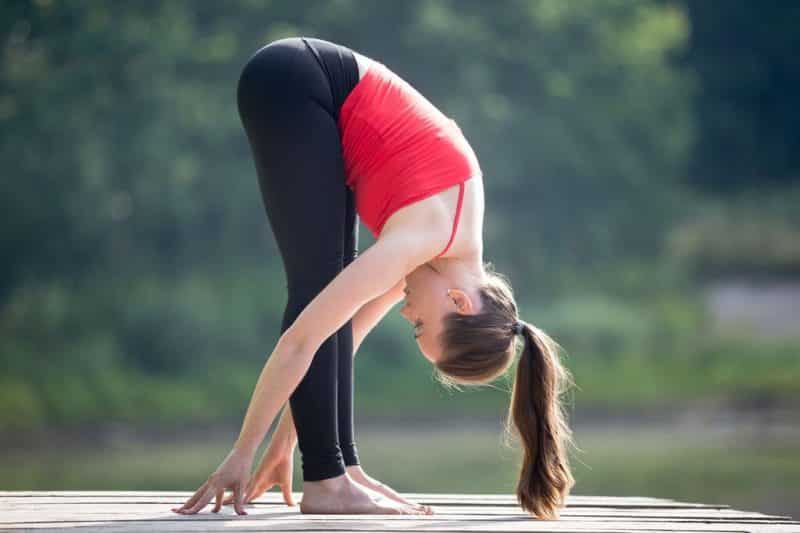
7) More Energy
Yoga does a few things for the body that result in a boost of energy. For one – a better night’s sleep makes for a more energized day. Second, studies show that some yoga poses adjust the hormone cortisol. Too little of this hormone can drain your body of energy. Although, you don’t want too much of it either!
Additionally, when you practice yoga you are taught to breathe more deeply, which means your blood receives waves of fresh oxygen. This is key to increasing energy levels.
To help beat fatigue try the following poses: utthita trikonasana, utkatasana, and salabhasana. Once you’ve completed these poses you should feel more awake, leading to a more productive day.
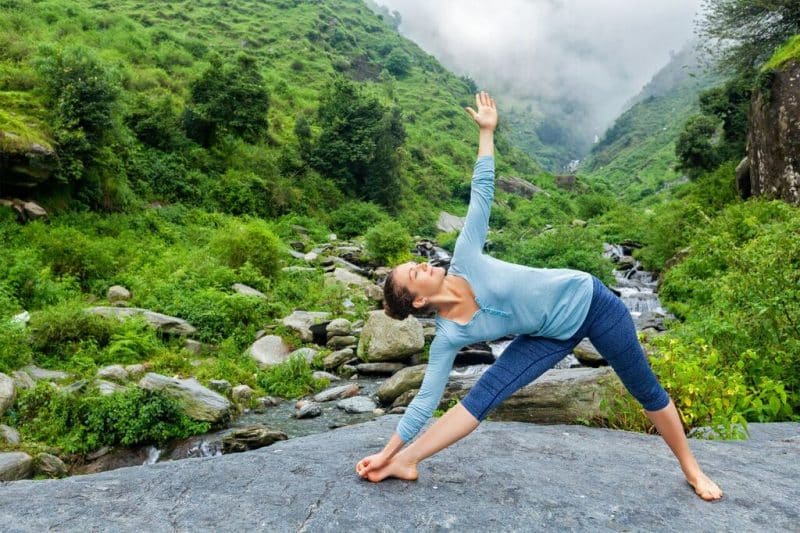
8) Better Sex
Transforming your body into a super sexy machine is perhaps one of the most popular benefits associated with yoga. There are a few ways yoga translates into the bedroom. First and foremost, flexibility. As I mentioned earlier, the longer you do yoga the more flexible you will become. The more flexible you become the more poses (both on the mat and in the bedroom) you will be able to do. Additionally, you’ll be able to hold those poses for a longer period of time without getting tired. You’ll have more strength, more balance, and more flexibility, which all translates to better performance.
All yoga positions are linked to the sexual act, so you can literally choose any sequence and you’ll be improving yourself greatly. Choose poses that resonate with you and build from there.
9) Lower Blood Pressure
It’s important to monitor and lower high blood pressure since it can lead to heart attack, stroke, and other unhealthy cardiovascular events. Aside from taking medications, there are natural ways to lower high blood pressure. According to a study published in the British medical journal The Lancet, yoga is a great workout for your heart and over time will improve your cardiovascular function. The key is sticking with it long enough to get these benefits. In one study, researchers looked at people with hypertension and compared the effects of Savasana (Corpse Pose) with simply lying on a couch. After three months, the group that practiced Savasana noticed a 26-point drop in systolic blood pressure and a 15-point drop in diastolic blood pressure.
As you can see, you don’t have to do any extreme yoga poses or practice hot yoga to get the benefits of lower blood pressure. Rather, it’s the calming nature of yoga that does the trick. So focus on feeling good and only push yourself far enough for continual growth. Don’t push yourself to the point of frustration. Additionally, if you’re looking to lower your blood pressure then try to focus on meditating while you hold your poses.
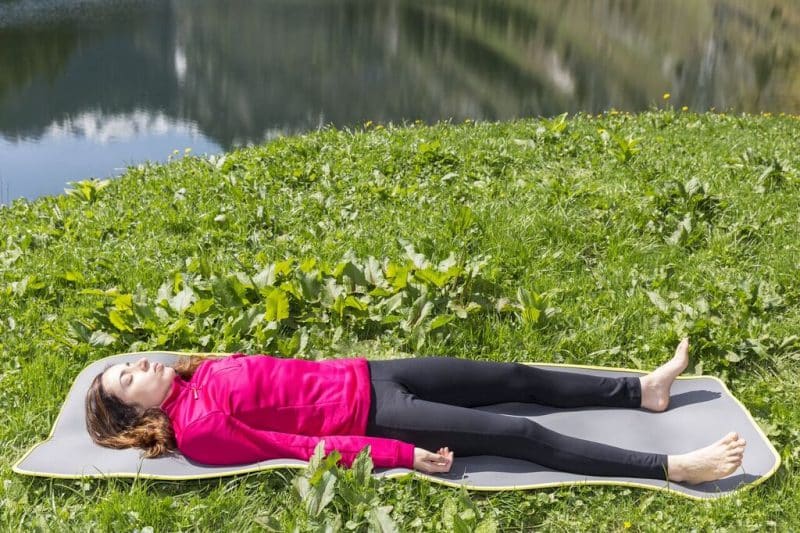
10) Better Circulation
With all of the twisting motions and upside down poses, yoga can really get your heart pumping and blood circulating. This means fresh blood and oxygen are delivered to your cells and organs, enhancing their function. According to studies:
“Twisting poses wring out venous blood from internal organs and allow oxygenated blood to flow in when the twist is released. Inverted poses encourage venous blood flow from the legs and pelvis back to the heart and then pumped through the lungs where it becomes freshly oxygenated.”
Yoga also thins the blood which can decrease the risk of heart attack and stroke, since they are often caused by blood clots. Additionally, yoga can help reduce swelling in the hands and feet.
The chair pose, downward dog, and warrior pose are just three poses that can improve circulation. However, it’s important to note that these benefits won’t be achieved overnight. So stick with it!
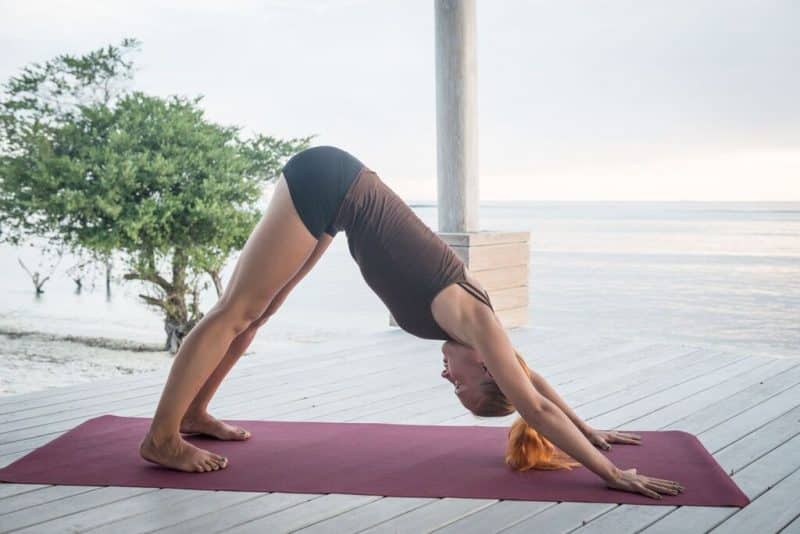
11) Lower Cholesterol
Cholesterol is a lipid that’s found in the bloodstream. While the body needs some cholesterol, too much LDL cholesterol can lead to a buildup of plaque in the arteries, blood clots, heart attack, and stroke. Impressively enough, numerous studies have shown yoga to lower LDL “bad” cholesterol and boost HDL “good” cholesterol. According to the American Heart Association, HDL cholesterol actually helps to remove LDL cholesterol from the arteries and carries it back to the liver, where it’s broken down and passed from the body.
If you are on a medication that lowers cholesterol and would like to begin practicing yoga on a regular basis, consult with your doctor first.
12) Lower Risk of Heart Disease
Between lowering blood pressure, increasing circulation, and lowering bad cholesterol, it’s no wonder that yoga helps to lower a person’s risk of heart disease. The various poses and deep breaths help the heart do its job, increasing blood flow throughout the body, and improving the entire circulatory system.
There aren’t any specific poses that will lessen your chance of heart disease. They’re really all effective!
13) Less Pain
Much of the pain we experience today is related to our lack of motion and activity. Yoga is one thing you can do to ease that pain. After a short period of practicing yoga, you may find your body moving into its proper alignment. When that happens, chances are a lot of your pain will dissipate. According to several studies, both asana yoga and meditation can help to reduce arthritis pain, carpal tunnel syndrome, back pain, fibromyalgia, and other painful chronic conditions. It’s important to remain optimistic and realize that it’s not likely going to be an overnight process.
There are specific poses you can do for pain management, but these will vary depending on what is hurting. You can do routines for back pain, arthritis pain, as well as any specific body part that’s giving you trouble.

14) Boost Your Metabolism
You’ve heard the term “metabolism” countless time, but do you really know what it means? According to the Mayo Clinic, metabolism refers to the process of your body converting what you eat and drink into energy. Each person has their own metabolic rate, which is affected by lifestyle. When someone is more active, their metabolism will get a boost. This assists in weight loss.
Try the locust, bridge, and shoulder stand if you want to directly work on revving up your metabolism.
15) Weight Loss
Yoga can help boost your metabolism and build stronger muscles, two things are essential for weight loss. Tip: If you start to eat more whole, organic foods while performing a daily yoga routine you’ll be more likely to see the pounds come off quicker.
16) Better Immunity
Do you feel like every time you turn around you are battling another cold or illness? If so, your immune system is probably weak. A weakened immune system can stem from a variety of things such as lack of sleep, chronic stress, and poor digestion. Since yoga has been found to improve all of those things, it may not come as a surprise that yoga can also strengthen your immune system.
According to doctors, yoga can stimulate the four main physiological systems that are linked to your immune system. They include the circulatory, digestive, nervous, and endocrine systems. Performing poses that benefit at least one of those systems could have a positive effect on immunity. That means, almost every yoga pose will help improve your immune system. However, there are a few poses that are more effective. They include bridge, shoulder stands, and head stands.

17) Better Respiration
During your first yoga class, you will quickly realize that one of the main focuses is your breathing. You’re consistently asked to pay attention to your breath. Taking deeper breaths, expanding your lung capacity, and being more conscious of your breathing are all part of the process. For that reason, it may not surprise you that yoga is great for people who are suffering from any sort of respiratory ailment or condition. It can help open up a person’s airways and gets their lungs to function more effectively.
The cow pose, cobra pose, and gate pose are all ones that you can do to boost your respiratory health. There are also several more as you get better at performing yoga, but it’s best to start with the easy poses to build confidence and move up from there.
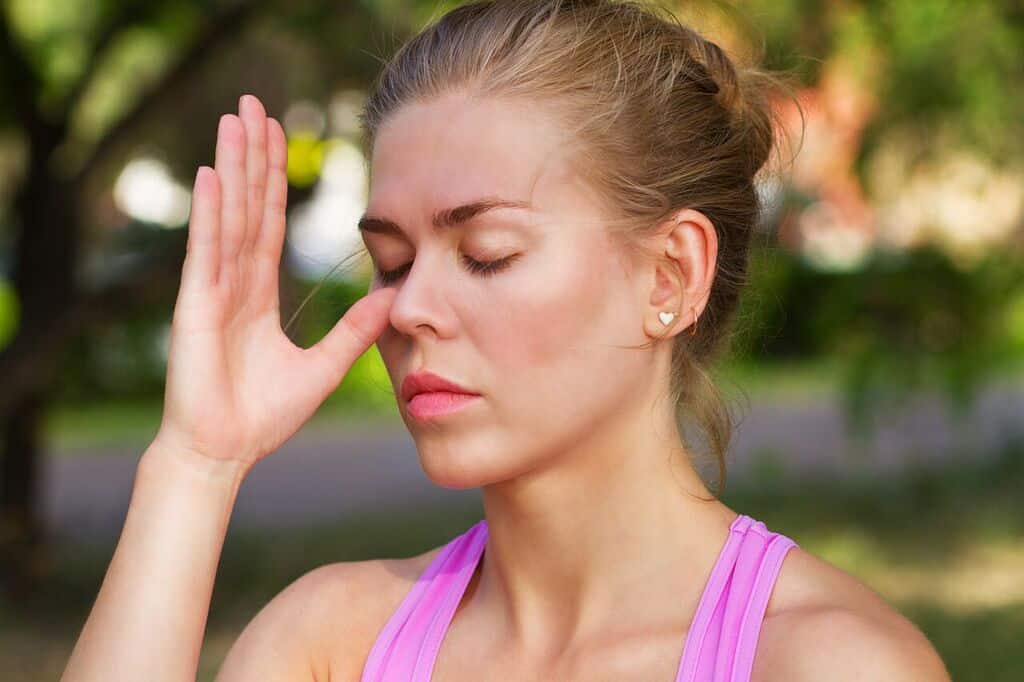
18) Less Stress and Anxiety
Between bills, bosses, family, and the hustle and bustle of everyday life, people are stressed to the max. As if the feeling of stress isn’t bad enough, chronic stress wreaks havoc on health in a number of ways. It can lead to poor digestion, weight fluctuations, weakened immune system, cardiovascular conditions, and much more. One way to naturally beat stress is to exercise. According to researchers, when you perform yoga, feel-good brain chemicals like serotonin are released, putting you in a better mood.
Additionally, yoga helps quiet the mind, gives your body an outlet to release energy blocks that may have you stressing out even more.
To de-stress try the balasana pose, also known as the child’s pose. It’s hard to hold this pose and feel stress at the same time, the two are almost mutually exclusive.
19) Better Memory
Since yoga improves blood flow to the brain, it’s often viewed as a brain-boosting workout. According to one study published in the Journal of Physical Activity and Health, just 20 minutes of yoga a day could have big brain benefits. Researchers had 30 female college-age students spend 20 minutes practicing yoga and 20 minutes doing an aerobic exercise. Researchers gave participants a cognitive assessment test after both the yoga session and the aerobic session. They found test scores to be “significantly superior” on tests that were taken after the yoga session.
The great brain-boosting pose is padahastasana. It involves bending over so that your head eventually is near your knees with enough practice.
20) Lower Blood Sugar Levels
This is great news for diabetics and those that have been told they are at risk for developing diabetes. Yoga has the ability to lower blood sugar levels when done on a regular basis. Paired with a well-balanced diet, this can go a long way towards keeping these levels within healthy parameters.
Diabetics are often advised to exercise and yoga is one exercise that you can do all year long, no matter the weather, and without any extra equipment. Pranayama is a great pose for lowering blood sugar.
21) Lowers Sodium Levels
The average American gets about 3,400 mg of sodium a day, which is much more than recommended. Rather, the Dietary Guidelines for Americans recommends limiting sodium to less than 2,300 mg a day. While sodium is an important nutrient, too much can lead to fluid retention, high blood pressure, stroke, and other heart issues. Along with cutting back on table salt, it’s important to get active and sweat out the sodium. Tip: You may want to try hot yoga, which is yoga performed in a room with sauna-like temperatures. This helps to get you sweating.
22) Improves Digestion
You may not realize it, but when you exercise you’re not only working your leg and arm muscles. Inside your intestines, there is also a layer of muscle that is constantly contracting to help food waste pass. If you aren’t getting enough physical activity, though, your intestinal muscles may become too relaxed. In yoga, you perform a combination of deep breathing exercises and twisting poses that really massage the organs, works your intestinal muscles, and helps release any trapped toxic stool.
If you are looking to relieve constipation or simply improve your overall digestive health, try cat/cow pose, half gas relief pose, half lord of the fishes, or any other twisting pose.
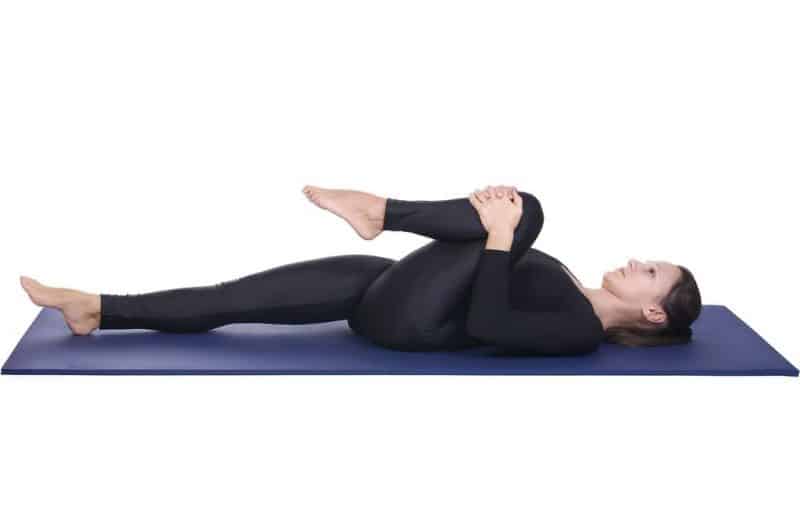
23) Moves Lymph Fluid
Your lymphatic system is interesting because it doesn’t have a pump to move its fluid like the heart pumps blood. Rather, it relies on you to get enough movement throughout the day to get lymphatic fluid moving. However, since many Americans simply don’t get enough exercise during the course of a day to stimulate the fluid movement, there is a virtual epidemic of lymphatic problems caused by improper drainage of lymphatic fluid. To fix this, all it really takes is some specific yoga poses to get the job done.
For example, try anything that gets you inverted, like a shoulder stand or a headstand. These are pretty advanced moves, so you’ll want to work your way up to them or use a wall for support.
24) Helps Prevent Osteoporosis
Osteoporosis is a medical condition where a person’s bones become brittle from loss of tissue. This is typically the result of hormonal changes or nutrient deficiency (namely calcium and/or vitamin D). To help prevent the condition, researchers recommend practicing yoga. Studies show that weight-bearing exercises (like yoga) strengthen bones and help ward off osteoporosis. In an unpublished study conducted at California State University, Los Angeles, people who practiced yoga experienced an increase in bone density in their vertebrae. This could possibly be a result of yoga’s ability to keep calcium in the bones.
The parivrtta trikonasana, salabhasana, and ardha chandrasana poses will all help you prevent osteoporosis. Remember, you don’t have to be a yoga master to do these poses, or hold them for long periods of time at first. Just trust your instincts and do what you can to start. Starting is the most important thing, not being perfect.
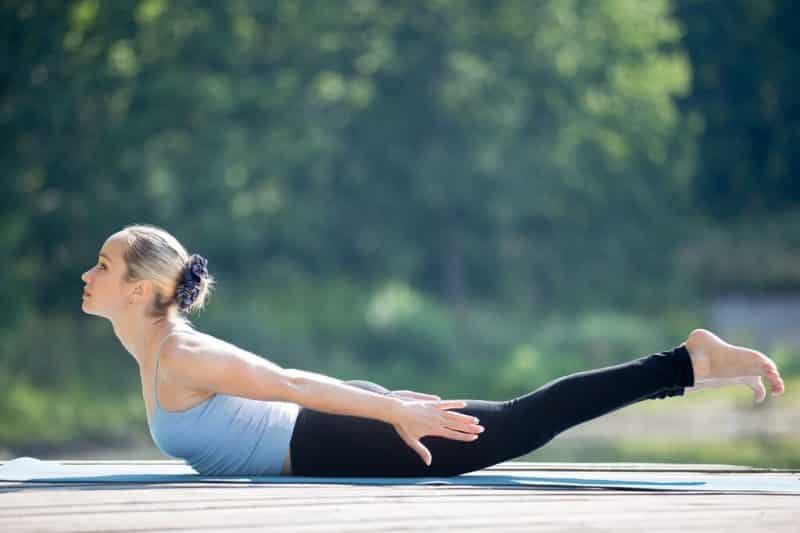
NOTE: If you’re already suffering from this disease, be sure to take it easy at the outset, since your bones are already in a fragile state. Only hold poses for a short time so that your body can get used to it.
25) Alleviates Symptoms from Many Conditions
From helping cancer patients recovering from chemotherapy treatments to helping arthritis sufferers regain mobility in their joints, yoga can provide symptom relief when it seems like nothing else works.
The great part about yoga is no matter what condition you’re currently in, there are at least a few poses that you can perform. Some yoga exercises are just breathing. So even if you’re bedridden you can do these breathing exercises to help focus your mind and improve your respiratory function. You’d be amazed at how much better you feel just by breathing more effectively.
Depending on your symptom, you’ll want to do specific poses. You may also find that a general yoga routine with some of the most popular poses works just fine.
26) Improves Your Outlook on Life
Getting a better outlook on life can help you in nearly every aspect of your life. You may feel like not even trying some days, or you may get stuck in a cycle of unhealthy thoughts. Thankfully, yoga boosts serotonin levels and can help you break free from your slump. Who knows, with a new zest for life you may take on new work projects. You’ll never know unless you get started and the good news is even the most basic yoga poses can get you there.
27) Provides an Inner Calmness (Eventually)
When first starting out with yoga, you may find the poses hard to get into and even harder to hold. Your state of inner being might be all chaos and confusion mixed with frustration and exhaustion. Trust me, if you have faith and stick with it, you’ll get better. Once the poses get easier to you, you’ll be able to turn your mind inward, which produces the calmness you typically hear attributed to yoga.

It’s a good idea to work with an instructor if you’re just starting out. They work wonders on keeping you in the moment and stopping you from being so hard on yourself. Just don’t fret when you aren’t able to perform the poses as effortlessly as they are!
A Beginner’s Yoga Routine
Check out this 15-minute video for a great beginner yoga routine!



